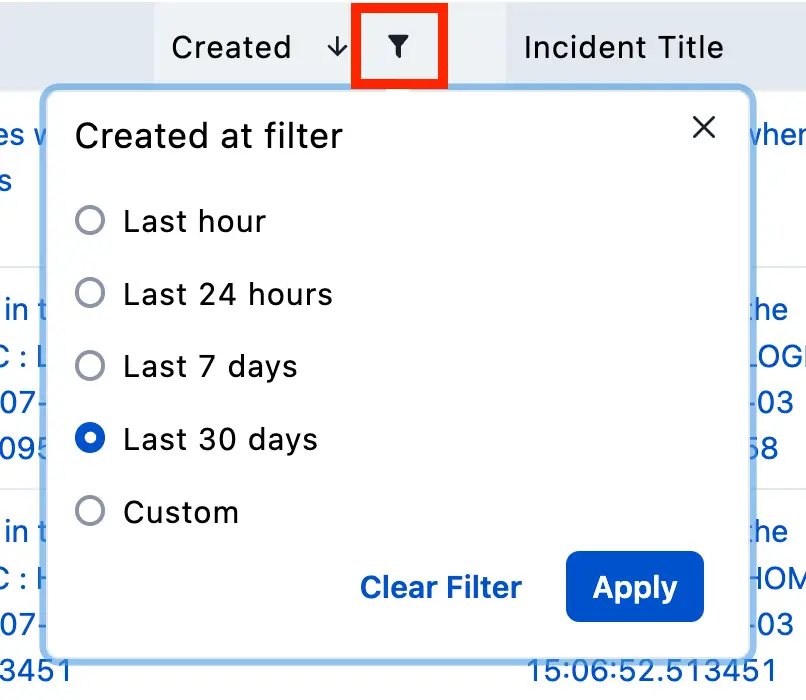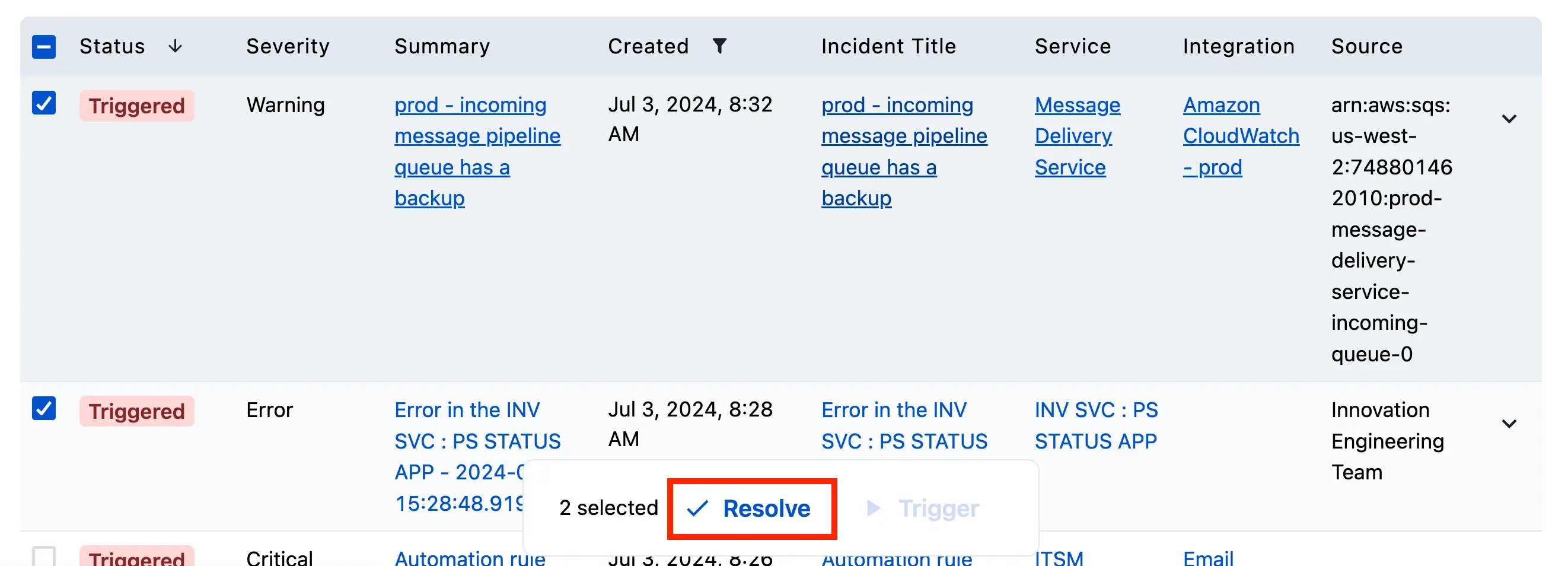Alerts Table
View and take action on incident alerts
The alerts table allows you to view and sort alerts according to your preferences, helping you locate what you're looking for quickly and efficiently.
Required User Permissions
The alerts table only shows alerts from services that you have access to. The visible alerts may be restricted by your Base Role, Team Role or Object Role. If you would like permission to view alerts from a specific service, please reach out to the appropriate Team Manager, Global Admin or the Account Owner to grant access.
When using Event Orchestration, if you suppress alerts and do not route them to a service, those alerts will only be visible to administrators.
View the Alerts Table
Navigate to the alerts table in the PagerDuty web app by selecting Incidents Alerts.
By default, the alerts table displays alerts from the Last 30 days. You can adjust the time range:
- On the alerts table, find the Created column and click to the right.

Filter the Created column
- Select one of the following time range options:
- Last hour
- Last 24 hours
- Last 7 days
- Last 30 days (default)
- Custom
- Click Apply.
Alerts Table Columns
Alerts are filtered via the columns that appear in the alerts table. The type of filter (e.g., radio button or search) varies based on column data type.
The columns Severity, Summary, Source, Class, Component and Group all map to Common Event Format (PD-CEF) fields, which can be included in your events with our Events API v2.
The Status column indicates whether your alerts are triggered, resolved, suppressed, or suspended. Created indicates the date and time the alert was created.
Incident Title points to the incident your alerts are grouped under, and Service and Integration point to the service and integration your alerts are associated with.
Show and Hide Columns
Customize Columns lets you show or hide the Incident Title, Service, Integration, Source, Class, Component and Group columns. The Status, Severity, Summary and Created columns cannot be disabled and are grayed out in the Customize Columns menu.
Incident Title, Service, Integration and Source are automatically enabled, but can be hidden.
Search Filtering
Search filtering is enabled on the Summary, Incident Title, Integration, Source, Class, Component and Group columns. Partial matches will be displayed, for example searching Prod will show results for both prod04 and Prod03.
Sort Filtering
You can sort a majority of the columns. The default sort setting is by Status (i.e., Triggered, Resolved, Triggered (Suppressed), Resolved (Suppressed), or Suspended). Sortable columns will display or when you hover over a column's name. Click the arrow to sort your alerts based on this column. The active sort column will show an arrow, while other columns will not.

Sorted by status
Active Filters Bar
The active filters bar at the top of the alerts table keeps track of which filters are enabled. Column tags populate the bar, and filter icons highlight blue when filters are active.
The following image shows the alerts table with active Severity and Status filters:

Active Severity and Status filters
Clear Table Filters
Table filters can be cleared from within the Active Filters Bar by clicking next to each individual filter. You may also remove a search filter by clicking the search icon a second time and selecting Clear filter.

Clear table filters
Alert Actions
You may perform actions on alerts that have are triggered, triggered (suppressed) and suspended.
Triggered Alerts
You can resolve triggered alerts, including suppressed triggered alerts, by ticking the checkbox to the left of the alert and clicking Resolve at the bottom of the screen.

Resolve triggered alerts
Suspended Alerts
You can configure Event Orchestration to generate Suspended alerts, which will not immediately trigger an incident or send out responder notifications. These alerts can either be triggered or resolved by checking the checkbox to the left of the alert and clicking Trigger or Resolve. For more information, please read Event Orchestration: Pause Incident Notifications.
Updated 6 months ago
